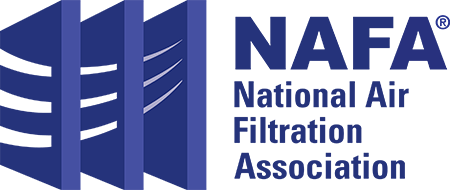Effectiveness of Germicidal UV Radiation for Reducing Fungal Contamination within Air-Handler Units
June 29, 2011
This is a summary of research completed on the fungi growing on insulation within air-handling units (AHUs) in an office building and levels of airborne fungi within the AHUs measured before the use of germicidal UV lights and again after 4 months of operation.
Fungal contamination in air-handling units is a problem in many buildings with central heating, ventilation and air conditioning systems and is a potential source of contamination for occupied spaces. Control of fungi in indoor environments has traditionally focused on source control or air cleaning as methods of removal. UV irradiation, used to disinfect indoor environments in hospitals and other healthcare facilities has various effects on fungi. This investigation was undertaken to determine the effectiveness of germicidal UV radiation on reducing fungal contamination within AHUs.
The test facility was a 286,000 square foot building in Tulsa, Oklahoma and was originally constructed in the 1920’s and completely remodeled in 1976. Each of the floors of the 4-story facility is equipped with four primary AHUs and two perimeter units. When the study was undertaken in 1996, acoustical insulation within many of the AHUs exhibited abundant mold growth, as did the drain pans. Preliminary air and insulation samples were collected to develop the sampling protocol.
Two floors were selected for investigation; no UV lamps had been installed in these units. The floors were designated the study floor and the control floor. In May 1997, air samples and insulation samples were collected from the eight AHUs. UV lamps were installed on both floors – each AHU being retrofitted with 10 lamps, installed downstream of the coils. Output of the lamps was 158 microwatts per square centimeter at 1 meter or 10 microwatts per square centimeter for every 2.54 centimeters of tube length.
UV lamps on the control floor were not operated and on the study floor were operated 24/7 throughout the summer and early fall months – while the AHUs were in the air conditioning mode. Sampling was done using paired-stage Anderson (N-6) samplers with malt extract agar for viable fungi and paired Burkard personal samplers for total spores. Two-minute Anderson and 5-minute Burkard samples were collected approximately 40 centimeters downstream of the cooling coils. Pieces of the insulation, approximately 60 square centimeters, were cut from the ductwork directly opposite the cooling coils. Dominant fungi found within the AHUs for both air and insulation included Penicillium corylophyllum, Aspergillus versicolor and a strain of an unidentified Cladosporium species.
In May, before the UV lights were initiated, mean concentrations of the total fungi isolated from the insulation on the two floors were similar in type and quantity (see table 1), while the total concentration of viable fungi in the AHUs on the study floor and control floor in the fall were significantly different.
While this study indicated that concentrations of fungi were significantly lower when UV lamps were in use, the study did not show what stages of fungal growth were most susceptible, nor did it show whether there was a reduction in spore viability. Also, the study was not able to show if all of the fungi obtained fro the AHUs were susceptible to UV light. Asthana and Tuveson (2) showed that germicidal effects were highly selective for certain species.
In summary, this study indicates that germicidal UV irradiation may be an effective approach for reducing fungal contamination with AHUs. The use of germicidal UV lamps in AHUs resulted in significantly lower levels of fungal contamination in insulation lining of the study floor as opposed to the control floor (see Table 1). Also, there were significantly lower levels of viable and total airborne fungi than in the study floor units than in the control floor units when samples were taken during the periods (see Tables 2 & 3).
b May concentrations were measured before the UV lamps were turned on
c Mean (standard error).
d The concentrations on the control floor and the study floor were significantly different after the use of germicidal UV lamps (P < 0.05).

